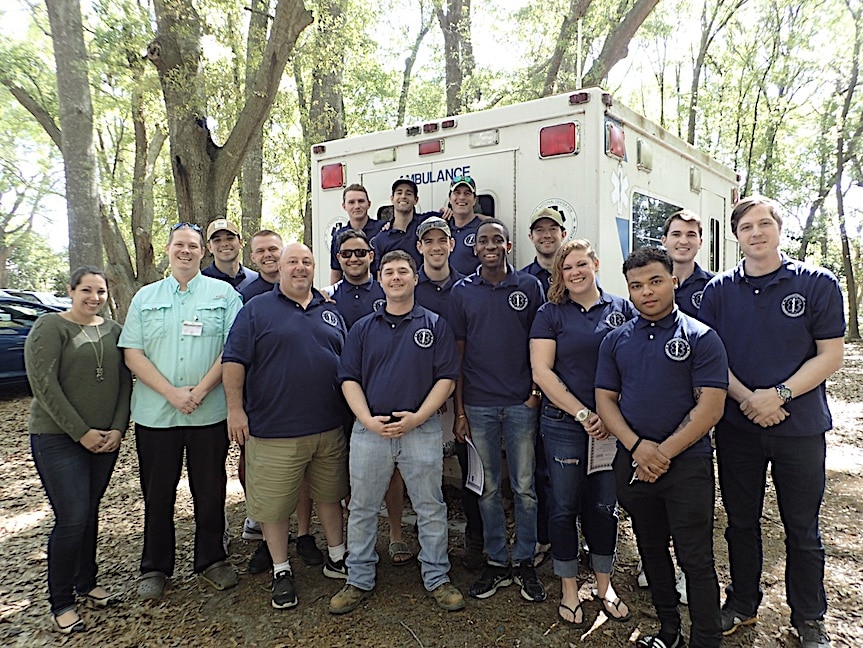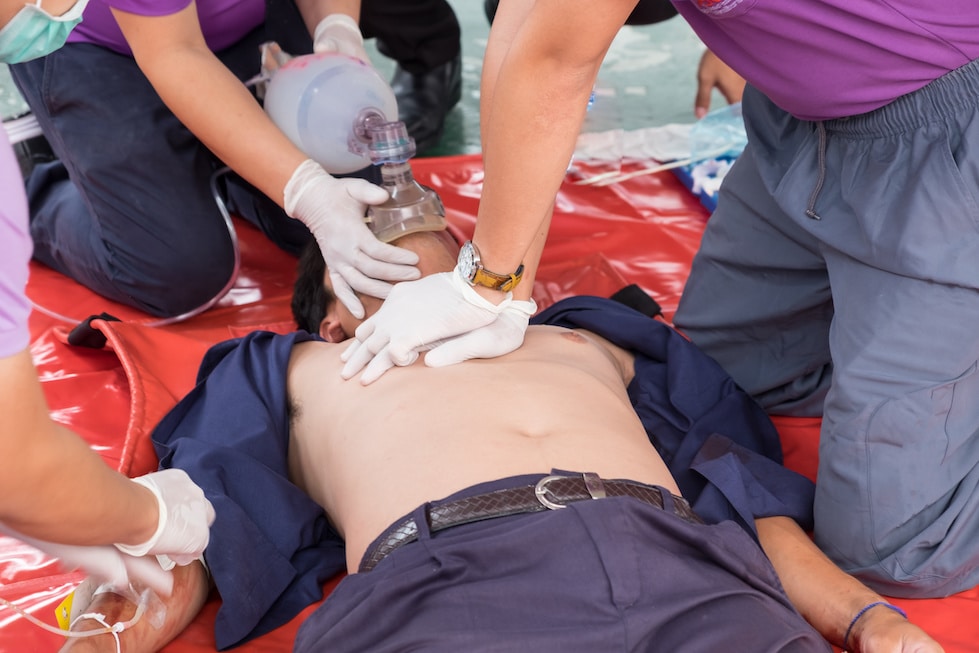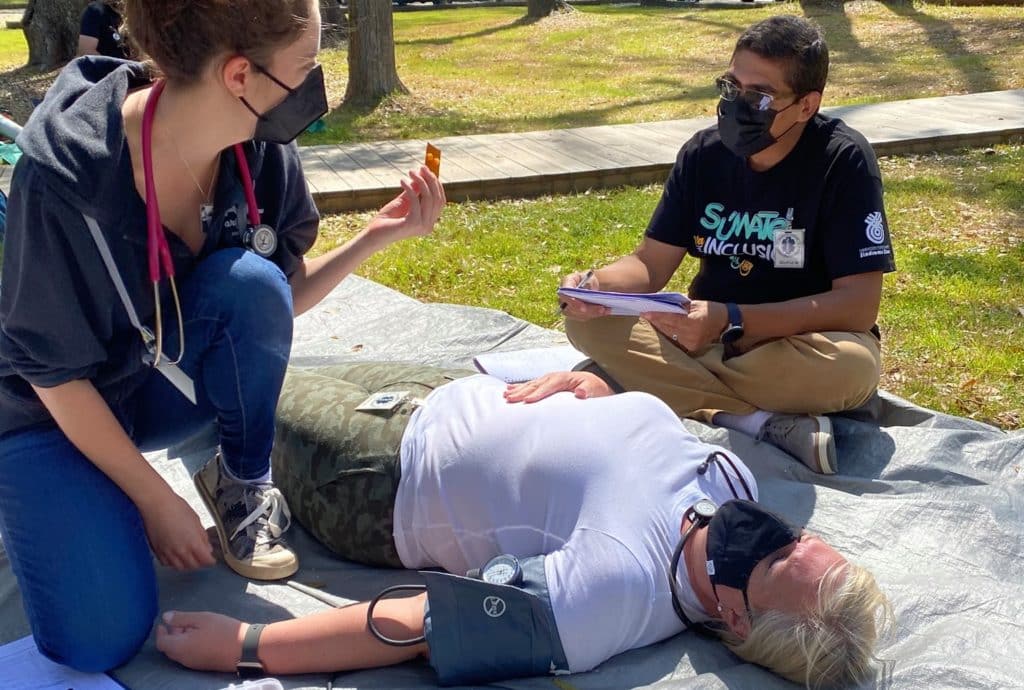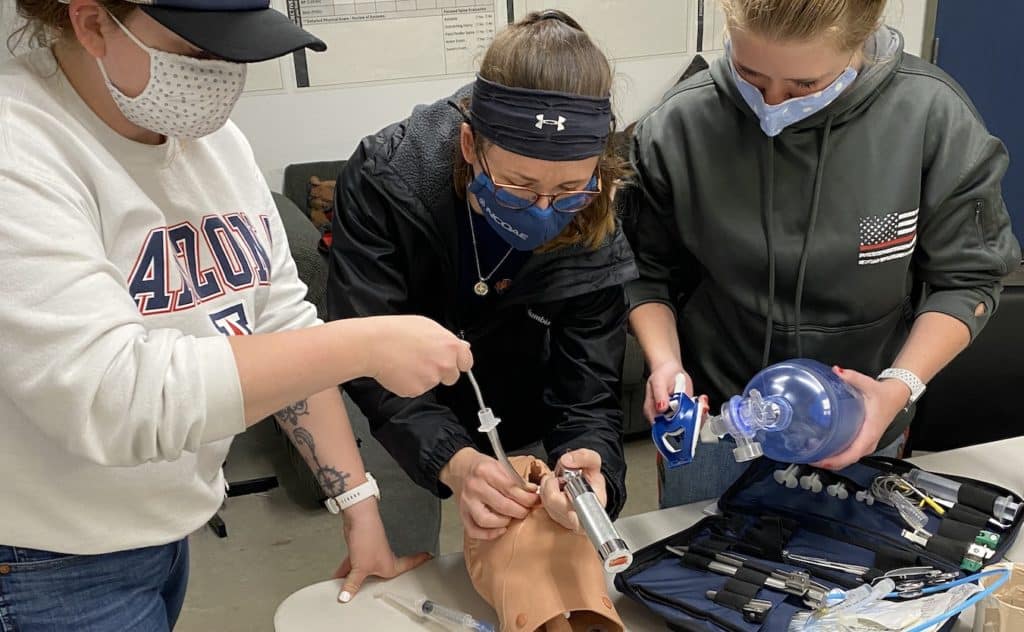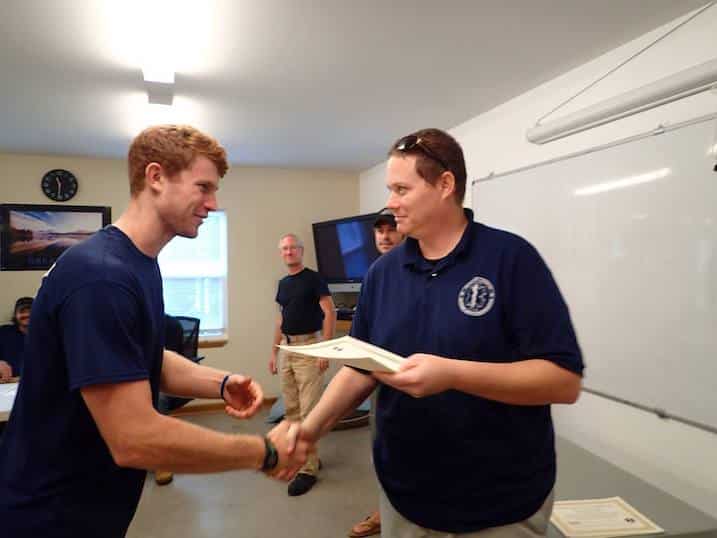Intensive Self-paced EMT Certification Course for Oregon and North Carolina
EMT TrainingFinding a local EMT certification course provider and fitting the training into a busy schedule may seem like an insurmountable obstacle, especially if you’re still in school, working a full-time job — or both.
The solution? The National Center for Outdoor and Adventure Education’s (NCOAE’s) Intensive Self-paced EMT Certification Course, which gives you the freedom to learn at your own pace, from anywhere.
This flexible EMT certification in Oregon and North Carolina is designed for people who are passionate about emergency response, the Intensive Self-paced EMT Certification Course offers a comprehensive, hands-on approach to learning that combines in-depth coursework with practical, real-world applications.
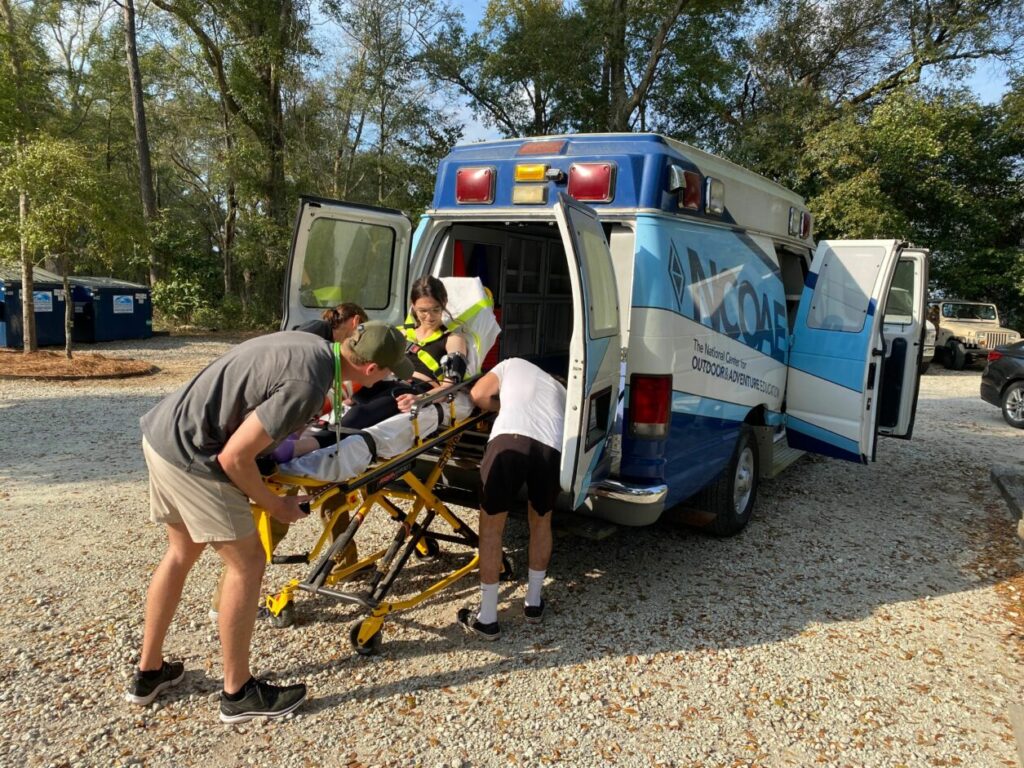
With expert instructors, engaging online content, and field training opportunities, this flexible EMT course is tailored to meet the needs of busy learners. Ready to dive in? In this post, we share most of what you need to know about this unique course offering from NCOAE, point you to sources where you can find additional details and provide the many benefits of Self-paced EMT Training.
About the Intensive Self-Paced EMT Certification Course
Our team designed this 240-hour self-paced EMT training course to be comprehensive, practical, and efficient. The curriculum is divided into two phases: (more…)
Testing for EMT Certification: Past, Present and Future
EMT TrainingEmergency medical technicians (EMTs) play a vital role in the modern healthcare system, providing immediate, life-saving assistance to people experiencing acute medical conditions or traumatic injuries. By rapidly assessing and treating patients in critical situations, EMTs improve survival rates, minimize complications, and optimize treatment outcomes.
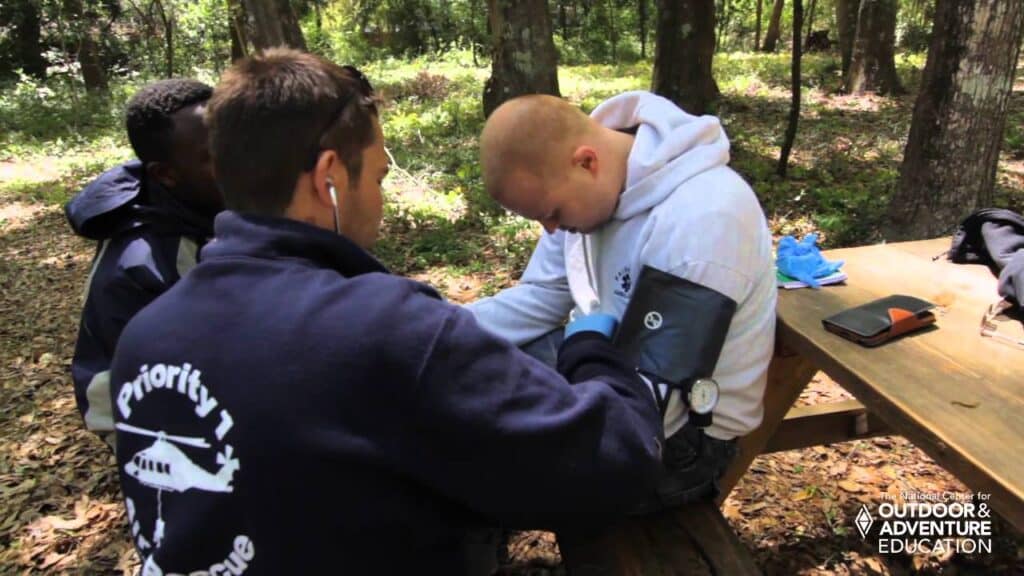
Training, testing, and certification ensure all EMTs have the skills needed to respond to life-threatening emergencies. In this post, we explore the history of EMT training and certification, bring you up to speed on its current state, and look ahead to its future. Why this matters to us here at The National Center for Outdoor & Adventure Education (NCOAE) is because we offer such training for EMTs throughout the U.S.
The Evolution of EMT Testing: Past to Present
EMT testing and certification have evolved over the course of nearly six decades. Formalized training didn’t begin until the late 1960s. It was initiated by the publication of a white paper in 1966 titled, “Accidental Death and Disability: The Neglected Disease of Modern Society.” The paper was in response to increasing trauma and death resulting from traffic accidents in the United States.
Up to that time, ambulance services generally consisted of team members with little to no formal training, with such services often relying on volunteers. And any formalized training and testing that was being done was administered locally by (more…)
Gaining the Clinical Experience to Get into Med School: EMT Training and Direct Patient Care
EMT TrainingExperience is among the biggest hurdles you need to clear in order to enter any competitive profession. However, clearing this hurdle can be especially challenging for those entering the medical field because it’s unlikely you can get into medical school without some experience under your belt.
Unlike other professions, the field of medicine offers internship opportunities only upon graduation from medical school. So, the question for many high school and college students aspiring to become doctors is this: How do I get the patient care experience I need to get into medical school if I’m not a doctor?
Our solution? Perhaps the best clinical experience for pre-med can be obtained by training for and working as an emergency medical technician (EMT). As an EMT, you get diverse hands-on patient care experience in a fast-paced, high-intensity treatment environment while working closely with firefighters, police officers, doctors, and other emergency-response and medical professionals. And you gain exposure and experience with patients who have a variety of medical conditions in a broad range of emergency response scenarios.
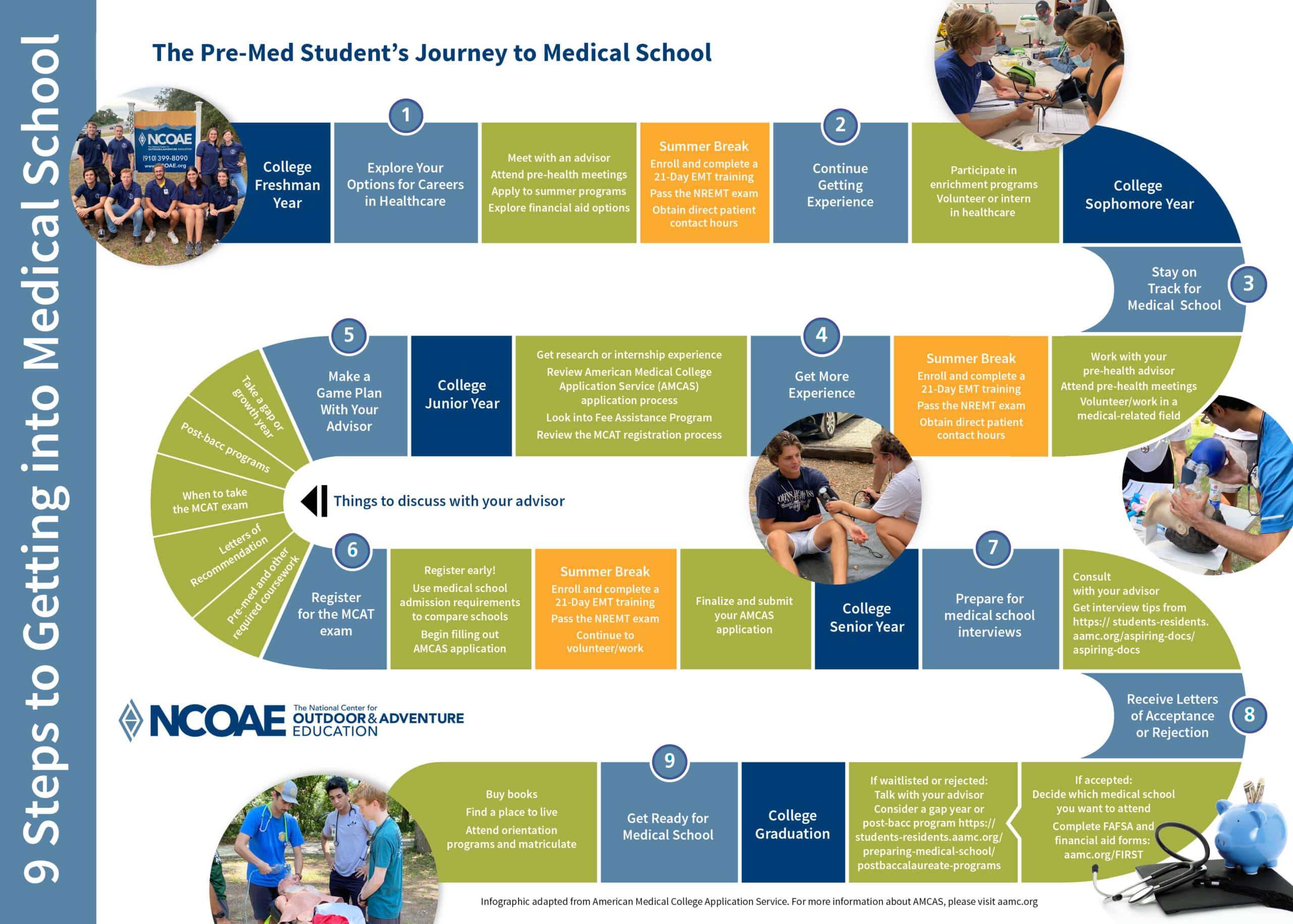
Discover efficient and effective paths to medical school, and ways to get the clinical experience needed to increase your chances of being accepted.
The Path to Medical School
According to the Association of American Medical Colleges (AAMC), the recommended approach to getting into medical school includes:
- Explore your medical career options.
- Get some experience.
- Stay on track for medical school.
- Get more experience and explore resources.
- Team up with your advisor to build a game plan.
- Register and prepare for the Medical College Admission Test (MCAT).
- Prepare for med school interviews.
- Receive letters of acceptance or rejection.
- Prepare for medical school.
Steps 2 and 4 call for gaining experience — hands-on patient care experience. The people who run medical schools are only looking for serious candidates — intelligent individuals who are passionate about the field. They seek those committed to completing a rigorous and prolonged education and training program.
They don’t want to fill their limited openings with candidates who are likely to drop out after their first encounter with a cadaver. Nor do they want to discover later that a (more…)
Meet the EMT Students: Colleen and Justin
EMT TrainingThere’s good reason why we precede our three-week Hybrid EMT course with the word “Intensive.”
And that’s because our 21-Day “Intensive” Hybrid EMT course enables students to satisfy eligibility requirements for the National Registry of Emergency Medical Technicians (NREMT) and North Carolina State EMT examinations in an expeditious manner. Our course includes 10 days of virtual, instructor-led training, followed by 11 days of hands-on, practical skills training.
Today in this post, we’re highlighting a couple of students who completed our EMT training and received their certifications. As you’ll see, neither of them rested on their laurels, instead immediately following their training with additional education. First up is Colleen Kenedy.
Meet Colleen Kenedy
The first student we’re highlighting is Colleen Kenedy, who completed our Hybrid EMT training course in December of 2021. She signed up for the program in order to gain hands-on medical experience in a short amount of time. The objective was to help her when she was accepted to Physician Assistant (PA) school. And Colleen did just that.

Shortly after completing her EMT course and passing her NREMT exam, Colleen was accepted for admissions to the PA Program at the University of Washington’s MEDEX Northwest campus in Anchorage, Alaska, where she is now completing her didactic year. She received her (more…)
Hybrid EMT Training Available in Oregon and North Carolina
EMT TrainingLong touted for offering hybrid EMT instruction in North Carolina, The National Center for Outdoor & Adventure Education (NCOAE) also offers Hybrid EMT training in Oregon.
This highly effective 21-day EMT training includes 10 days of virtual instruction delivered online, followed by 11 days of hands-on, practical training in Oregon’s Tygh Valley. The program offers an ideal format for college students, premed students, working professionals, and anyone else who appreciates the flexibility of learning in a fast-paced hybrid format.
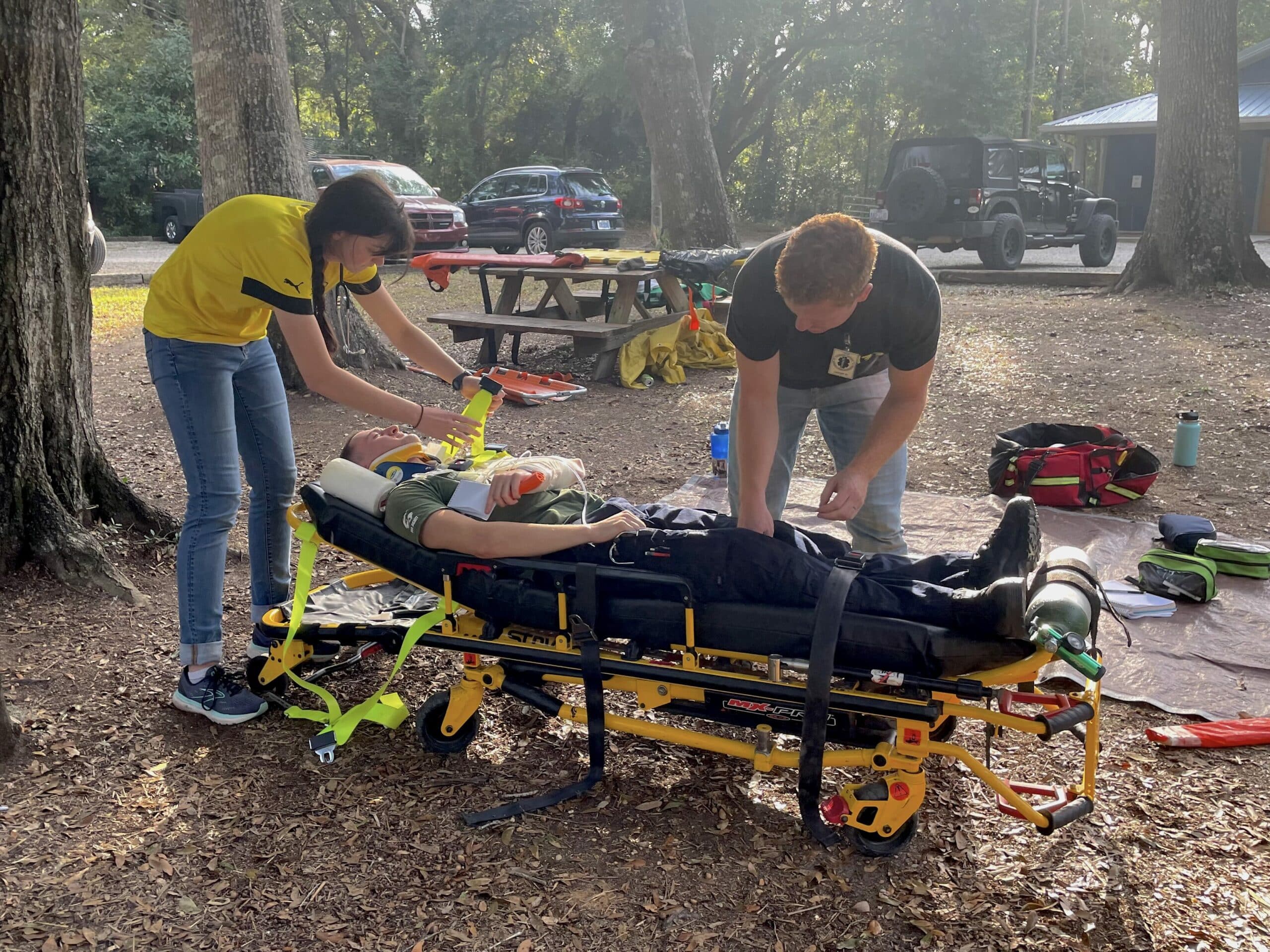
Whether you choose a hybrid EMT training program that features in-person, hands-on skills training in Oregon or North Carolina, your NCOAE training and experience will include the following:
Before your course begins: We’ll ask you to complete up to 30 hours of asynchronous web-based training using our online eLearning platform. The benefit to this approach is (more…)
8 Alternative Jobs to Pursue with an EMT Certification
EMT TrainingJust obtaining an Emergency Medical Technician (EMT) license opens a world of career possibilities both inside and out of the medical field. Sure, you have to put in the effort, but the opportunities are as diverse as our EMT students here at The National Center for Outdoor & Adventure Education (NCOAE).
Fact is, we receive applications from students from all walks and stages of life, who successfully complete our EMT training program and go on to use that EMT training for a variety of opportunities. Some become full- or part-time EMTs, others use this outstanding training and education as a steppingstone for medical or nursing school. And then there are the outdoor enthusiasts who use this EMT training to become Ski Patrollers or members of Search and Rescue crews, or to add an additional layer of medical expertise when guiding groups on mountaineering and backcountry expeditions.
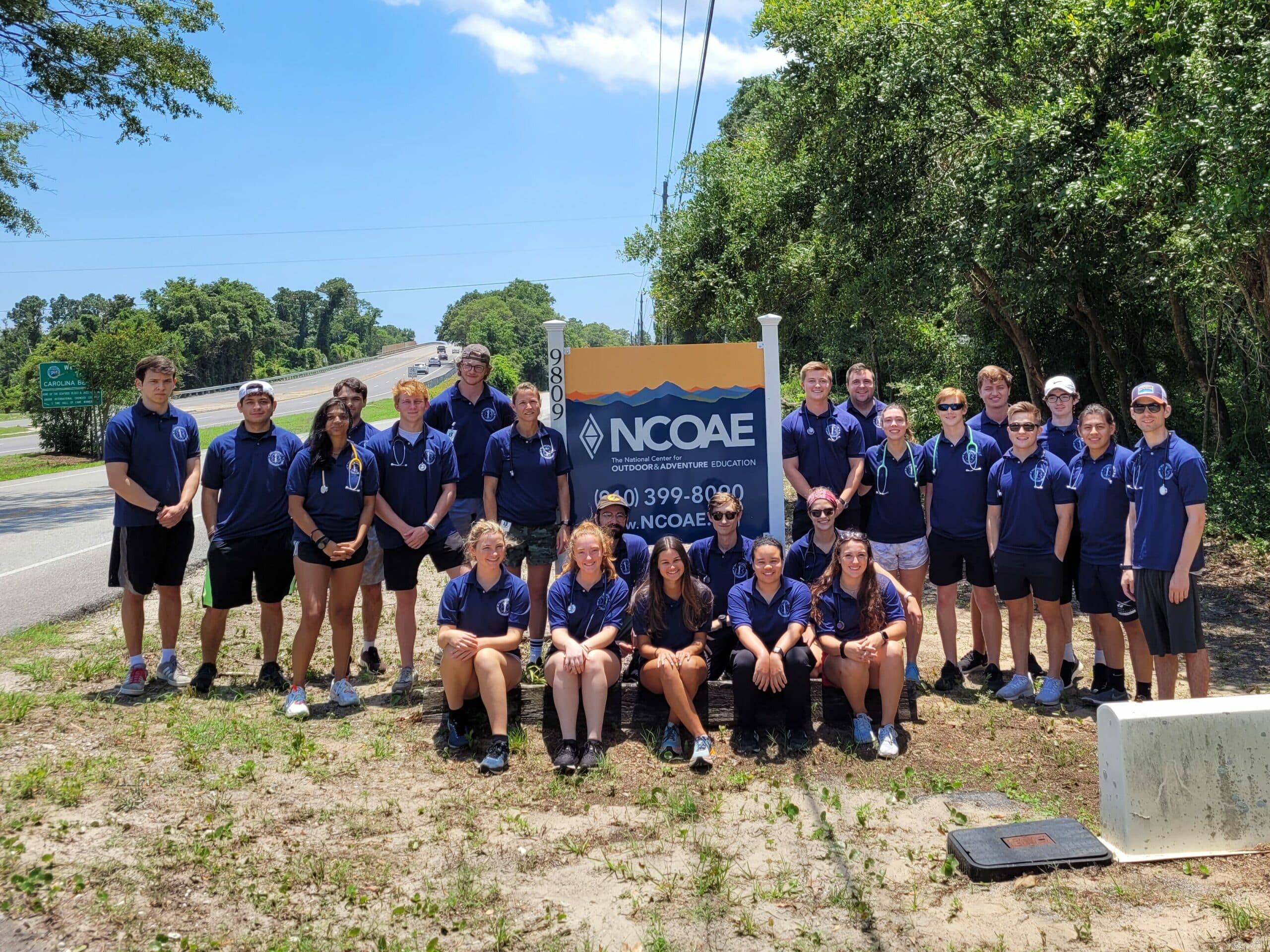
Maybe you’ve been an EMT for a while and are looking for a change, Or maybe you’re thinking about obtaining your EMT certification and then consider your options. While the most popular career trajectory for EMTs is to become a Paramedic, there are a number of jobs that you can obtain with just an EMT certification, keeping mind that some may require additional training.
Here are eight such opportunities: (more…)
Most EMS Terminology Comes Down to Initials, Abbreviations and Acronyms
EMT TrainingA few years ago, we ran a three-part series on slogans, slang, and terminology as it applies to a trio of human-powered outdoor recreational activities. If you recall, we started out with some “gnarly” surfing terms, then we “tied in” to a conversation about climbing, finally pulling a “wet exit” on the language of paddling.
You can review these three articles using the links below:
- From Sept. 20, 2020: Surfing Terminology and Slang: You Can’t Play BINGO Without the Lingo
- From Oct. 10, 2020: On Belay — Climbing Terminology and Slang
- From Oct. 30, 2020: Paddling Terminology and Slang: Nobody Says ‘Up a River Without an Oar’
There was quite a bit of word whimsy in those articles, and we made sure to remind readers that successfully lassoing the linguistics of a particular activity was no guarantee you were mastering that particular sport professionally.
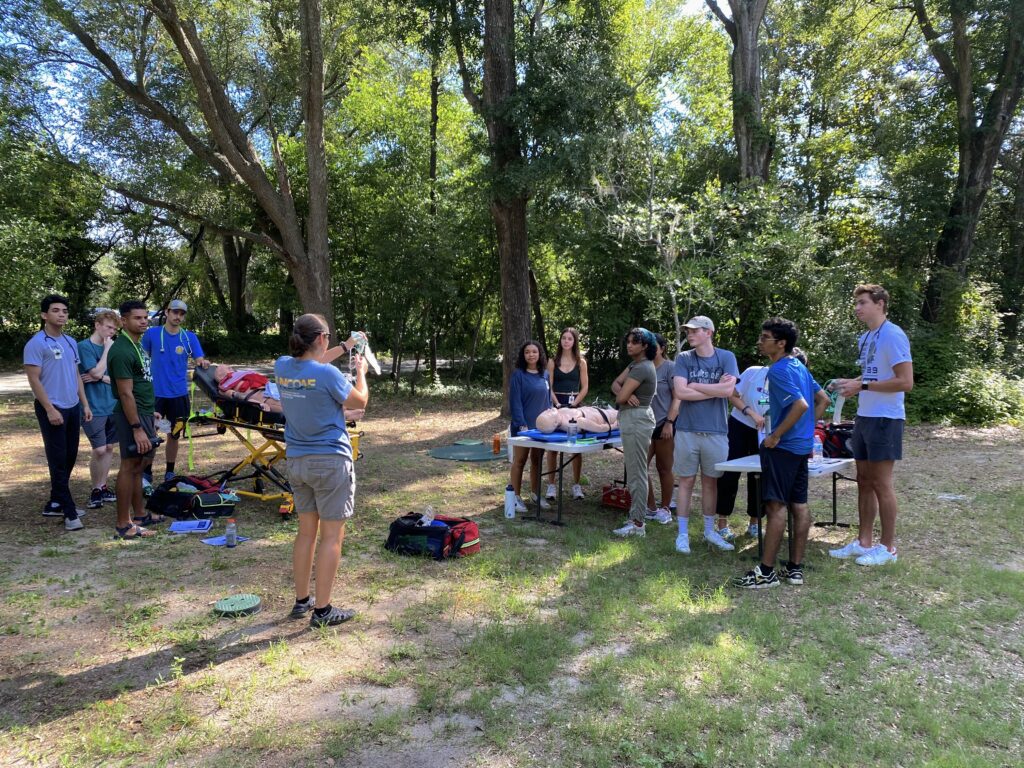
Today we’re taking a more serious look at language, this time highlighting the terminology used by members of the Emergency Medical Service (EMS) community. That’s because one of our areas of focus here at The National Center for Outdoor & Adventure Education (NCOAE) is emergency medicine training and education. And whether you’re an EMS, medical professional, or wilderness first responder (WFR), these terms are most often employed when these professionals find themselves managing a medical emergency.
First off, you might notice that most of these terms come in the form of acronyms, abbreviations, and initials, and the reason for that is to enable first responders to quickly communicate and react with each other and the patient in the field.
The source for these acronyms comes from the NCOAE Wilderness Medicine Field Guide (ISBN 978-0-578-87449-4).
Here, we present them in alphabetical order: (more…)
NCOAE’s EMT Training Opens the Doors to Jobs Across the U.S.
EMT TrainingApplicants to our nationally renowned EMT training courses often ask us if they can take
their new EMT credentials to the state where they live, and the answer is mostly yes.
The National Center for Outdoor and Adventure Education’s (NCOAE) campus is
located in North Carolina, where we offer 21-day “Intensive” EMT-Basic and 23-day
“Intensive” Advanced EMT training courses among others. Successful completion of
these courses authorize our graduates to take the National Registry of Emergency
Medical Technicians (NREMT) exam.
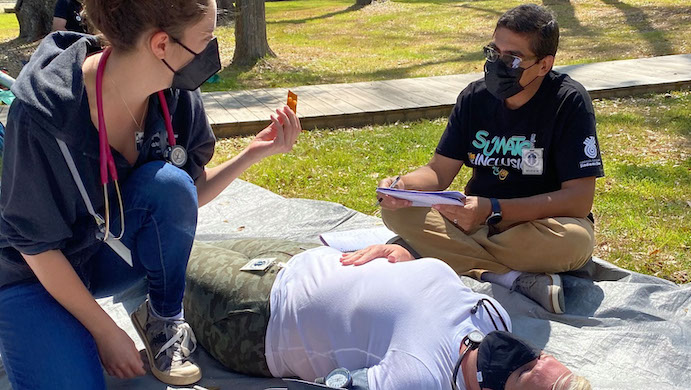
National Registry Certification examinations evaluate the competence of EMS
practitioners at a variety of levels, including Emergency Medical Responder (EMR),
Emergency Medical Technician (EMT), Advanced Emergency Medical Technician
(AEMT), and Paramedic.
NREMT credentials are either required for an initial license or accepted for legal
recognition or reciprocity in all 50 states and Puerto Rico. That makes it easier to
maintain
Exactly What Is It That an EMT Does?
EMT TrainingDepending on where you live, you may see them every day or just when there’s a fire, police, or medical emergency where you are. Regardless of the frequency with which you see them, you may be wondering — what exactly does an EMT (Emergency Medical Technician) do?
EMTs are not just “ambulance drivers,” although that’s certainly a critical part of their occupation. An Emergency Medical Technician is a trained and certified medical provider who has demonstrated competency in basic pre-hospital medical care.
For EMTs and patients, an ambulance is more than transportation to the hospital. It’s a mobile mini-medical center squeezed into the back of a moving vehicle where a skilled team of pre-hospital healthcare providers perform a variety of life-saving medical interventions that save lives every day in every community.
What an EMT Must Learn
While nearly anyone can attempt to become an EMT, in order to qualify to take and pass the National Registry of Emergency Medical Technicians certification exam, candidates must first complete an approved EMS education program. In that program, EMT candidates’ study and learn a lot of things, including:
(more…)It Took a Pandemic to Shine the Spotlight on Our Nation’s EMTs
EMT TrainingEmergency Medical Services personnel (EMS) have been on the front lines of the COVID health pandemic for 18 months now, with no end in sight. These key healthcare providers continue to adapt to an ever-changing work environment and thus far have maintained a high level of care.
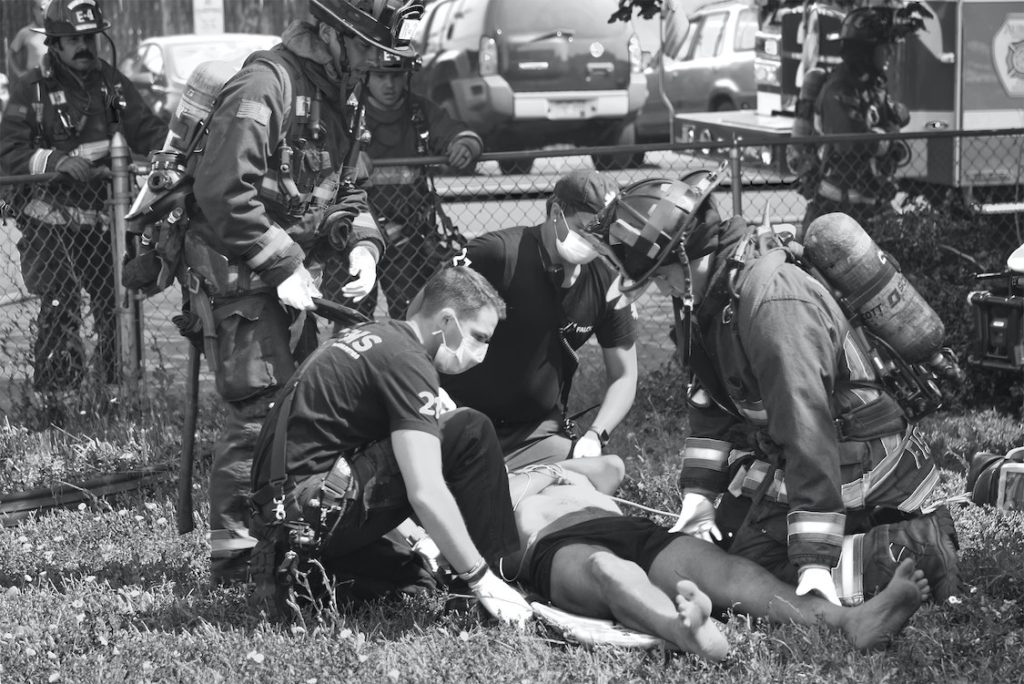
If you’re thinking of entering the field of EMS, know this: The need is greater than ever. That given, what should you know about EMS in the era of COVID? Below are thoughts from the experts here at The National Center for Outdoor & Adventure Education (NCOAE), where we offer a number of training options to prepare future EMTs for what lies ahead.
To get us started, let’s take a look at PPEs.
Personal Protective Equipment (PPE): For years most EMS providers considered “PPE” to mean “Exam Gloves.” No longer. Today, you’ll most likely be required to wear an N-95 respirator and eye protection for an entire 12-hour shift. You can probably also add a gown and potentially additional layers to that ensemble. It’s hot and uncomfortable and no one enjoys it. But we’ve shown it can be done, and that it’s being done to good effect.
(more…)Mental Health Issues for Emergency Medical Technicians
EMT TrainingBecoming a full- or part-time Emergency Medical Technician requires extreme and rigorous training, and it’s not a career choice to be taken lightly. That’s because emergency medical responders encounter patients in life-threatening situations, ranging from traumatic incidences of cardiac arrest and auto accidents, to drownings to drug overdoses.
EMS techs like the ones we train here at The National Center for Outdoor & Adventure Education work for hospitals, municipalities, and fire departments, and often provide emergency assistance in everyday urban areas as well as at ski areas, throughout the backcountry, at sports events, and even on offshore oil rigs. As a result, those who choose to become EMTs face high-stress situations daily, often dealing with patients who have just suffered a life-changing trauma.
Long shifts in an emergency department or in the back of an ambulance can take a toll, as well poor sleeping habits to due irregular working hours and poor eating habits because of the on-the-run nature of the profession. To make things worse, there’s a stigma attached to EMTs that purports a higher rate of mental health disorders than other occupations, including an increased risk of depression, suicidal thoughts, and a higher rate of substance abuse.
Which is why it’s important that those working in emergency medical services avoid burnout and take care of themselves so that they can continue to support the communities they serve.
Here are some things you can do to take care of yourself as an EMT: (more…)
Signs That an Intensive EMT Training Course Might be Right for You
EMT TrainingIntensive is one of those words that, when you say it out loud or write it down, sounds foreboding or, as the word itself suggests, promotes a feeling of tenseness. However, when we talk about completing an intensive EMT training course here at The National Center for Outdoor & Adventure Education (NCOAE), the word is not meant to scare you off.
Instead, it’s intent is to communicate the level of dedication you’re capable of putting into such a program, given the brief timeframe allotted for the program. And by brief, consider this: You can complete a high school EMT program in about a year. A university college course typically takes about six months to complete, and a community college course normally takes a semester.
However, to complete an intensive EMT course, such as those offered here at NCOAE, the work can be completed in just 21 days. That’s three short weeks. Boom! Done! Let me take the National Registry of Emergency Medical Technicians (NREMT) exam!
Benefits of the Intensive Approach to EMT Training
Know this: With an intensive program, you’re going to learn everything you need to know to take and pass the NREMT exam, and you’re going to learn it quickly. Just be prepared to take in a lot of information in a short amount of time. Here are a few of the advantages of intensive learning: (more…)
Thinking About Going to Med School? Start with EMT Training and Certification
EMT TrainingIf one of your goals is to apply to medical school and eventually become a doctor, here are a few of the hurdles you’ll need to jump through. First, you’ll need a four-year Bachelor of Science degree with a minimum 3.0 GPA, a passing score on the MCAT exam, and a few glowing letters of recommendation.
But how would you like to increase your odds of getting admitted and succeeding in med school? If so, you may also want to consider getting trained and certified as an emergency medical technician (EMT) and gaining some valuable experience in the field first.
According to a survey of 67 medical schools in the United States and Canada, 85 percent of those schools responded favorably to applicants with experience as EMTs or paramedics. That’s not exactly surprising. After all, EMTs have real-world experience in the medical field.
In this post, we highlight the advantages of obtaining EMT training and experience prior to applying for and enrolling in medical school.
Build Your Foundational Knowledge
EMT training helps to build your foundational knowledge in several medical disciplines, including the following: (more…)
How to Become an EMT
EMT TrainingYou’re thinking about becoming an EMT. Awesome! If you follow through, you will be joining the ranks of today’s modern-day heroes, the frontline of the frontline workers — bona fide life savers!
Emergency Medical Technicians (EMTs) are trained professionals who provide care in critical and emergency situations. Such emergencies can range from simple, routine calls to intense and complex scenarios.
You may show up for a call only to discover that there is no victim, or the person is okay and refuses help, or a patient simply needs transportation from one medical facility to another. On the other hand, you could be called in to attend to the victim of a car accident or a shooting or a heart attack, drowning, mountaineering accident, or drug overdose. You may even have to deliver a baby! You can never predict what will happen over the course of any given shift.
As an EMT, your job responsibilities generally boil down to keeping patients alive using non-invasive medical procedures and transporting them safely to a hospital or clinic where they can receive a higher level of professional medical care. More specifically, you have three fundamental job responsibilities:
- Assessment and stabilization of the patient’s condition
- Basic life support
- Transportation
In this post, we bring you up to speed on the different levels in emergency medicine and credentialing while explaining the basic education and skills required to become an EMT.
(more…)21-Day Intensive EMT-Basic Training Now Available in North Carolina
EMT TrainingStarting and completing EMT-Basic training in North Carolina doesn’t have to be a long, drawn-out exercise. It’s now possible — in just 21 days — to obtain the proper training and knowledge to take and then pass the National Registry and the North Carolina state EMT exam.
Editor’s Note: This course was previously a 19-day training but has since transitioned into a 21-day ‘intensive’ EMT certification course with a unique hybrid component as of 2021. Keep reading, and then visit the link at the end of this post for the latest info.
The following EMT Training video, which explains the ‘Intensive’ EMT-Basic Training program offered here at NCOAE, explains how we do it and why it’s so effective at helping people obtain their EMT credentials:
Classes meet virtually for 11 consecutive days, which include 131 hours of didactic, classroom training. Then, the class meets in person for 10 days, for an additional 61 hours of hands-on training, as well as 48 hours of clinical and (more…)
Tips for Participating in EMT Training Online
EMT TrainingYou might have heard that we have packed up and moved the first 14 days of our traditional June, July and August “Intensive” 19-Day EMT-B training courses to an online and at-home format. The reason for this change, of course, is the continuing saga of the coronavirus.
What this modification essentially does is add a mandatory hybrid component to this 19-day training program, with 14 days online, followed by five days on campus for practical and hands-on skills training. Earlier this year, the North Carolina Office of EMS approved our adjusted schedule for five days of on-campus EMT training programs.

Meanwhile, all NCOAE medical training programs taking place outside North Carolina have been put on hold, and the summer sessions on campus in Wilmington, N.C., remain on schedule, but with the hybrid component playing a major part of that training.
Which raises several important questions, including:
- How do we successfully train future emergency medical technicians remotely in this emergency era of digital space?
- How does a potential NCOAE trainee become a great online learner?
Just like everything else connected to COVID-19, this is brand new territory for all of us, and trial-and-error has become the name of the game. That said, we here at NCOAE have come up with some rules and procedures for those in training that, to date, have proven successful. And we will briefly outline those procedures toward the end of this post.
But for now, we’d like to share what we’ve discovered in our effort to make the temporary transition to digital training effective, interesting, and productive. What advice can we offer to those students new to online learning who are participating in our Hybrid 19-Day ‘Intensive’ EMT (EMT-B) training program? Here’s what we learned:
(more…)Jump Start Your Outdoor Education or Emergency Medicine Career with EMT Training
EMT TrainingFor those of us who work in the fields of outdoor and adventure-based experiential education and/or emergency medicine, the importance of professional medical training cannot be dismissed as merely “class time.”
While it’s true EMT training and certification may not be a requirement for many backcountry jobs or outdoor education positions, possessing certification for EMT qualifications far outweighs the Wilderness First Responder (WFR) certification, especially when it comes to landing your first or next job within this specialized field of ours.
Our certified EMS instructors are among the best in the industry and include veteran wilderness guides, EMT paramedics, firefighters, military operations specialists, and experts in critical care management. These educators provide expert instruction and personalized training that can ensure your EMT training meets and exceeds the high expectations all employers have for someone carrying such a designation.
Why You Should Consider the EMT Option
With EMT credentials in hand, our graduates have (more…)
It’s a Good Week to Honor EMS Professionals
Wilderness Medicine Training“Adventure First, Education Always” is the rallying cry here at The National Center for Outdoor & Adventure Education’s (NCOAE). What you’ll find embedded in that statement is our commitment to students that they will return from our courses and trainings mentally, educationally and physically prepared for whatever brought them to us in the first place.
To that end, we offer a number of training courses that keep outdoor educators and backcountry guides up to date on the standard of care and best practices when managing medical emergencies in wilderness settings. In addition, we offer to the best of our knowledge the nation’s only 19-Day ‘Intensive’ EMT-Basic Training course.
EMT stands for Emergency Medical Technician — clinicians, trained to respond quickly to emergency situations regarding medical issues, traumatic injuries and accident scenes. Those clinicians tend to work with the EMS space, which of course stands for Emergency Medical Services.
People call EMS when they have had an accident or are experiencing a medical emergency, including heart attack, difficulty breathing, a fall or accident, drowning, cardiac arrest, stroke, drug overdose or acute illness. As a result, EMS professionals may have to provide basic and/or advanced medical care at the scene of an emergency and en route to a hospital.
Which brings us to the point of this blog post: (more…)
TALK TO US
Have any further questions about our courses, what you’ll learn, or what else to expect? Contact us, we’re here to help!
